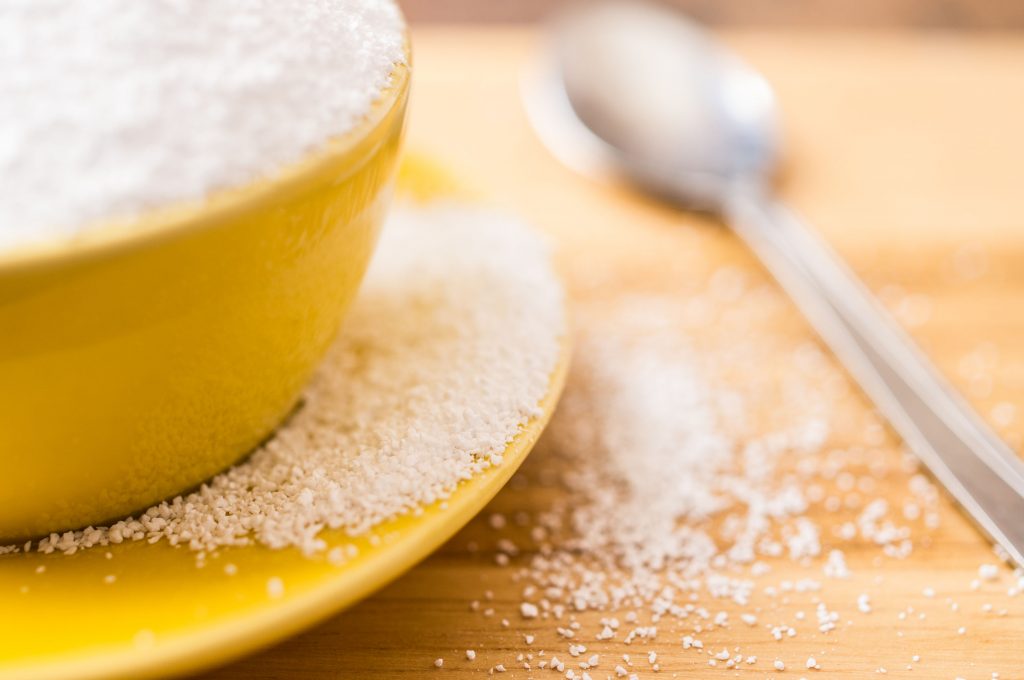Node Smith, ND
Sucralose, a widely used artificial sweetener sold under the trade name Splenda®, is metabolized in the gut, producing at least two fat-soluble compounds, according to a recent study using rats. The finding differs from the studies used to garner regulatory approval for sucralose, which reported that the substance was not broken down in the body. The new study also found that sucralose itself was found in fatty tissues of the body.
Researchers used the same experimental model used by FDA to assess the safety of foods based on accepted daily intake
The researchers used the same experimental model used by the Food & Drug Administration (FDA) to assess the safety of foods based on accepted daily intake. In this case, that involved administering an average dose of 80.4 milligrams/kilogram/day to 10 rats for 40 days. Urine and feces from the rats were collected and assessed for those 40 days, and for the following two weeks. At the end of the two-week follow-up period, fatty tissue from a subset of the rats was also tested.
Researchers used techniques designed to detect both fat- and water-soluble metabolites
The researchers, from North Carolina State University and Avazyme Inc. – an analytical testing company – used techniques designed to detect both fat- and water-soluble metabolites. That’s significant because industry did not use state-of-the-art techniques that targeted the full suite of fat-soluble metabolites in the studies it submitted to the FDA when seeking FDA approval for sucralose.
“Our techniques were more suited to extracting and preserving fat-soluble metabolites,” says Susan Schiffman, an adjunct professor at NC State and co-author of the recent study. “We were also able to use state-of-the-art analytical techniques to identify those metabolites.
Two metabolites found in urine and feces throughout the sucralose dosing period
“We found two metabolites in urine and feces throughout the sucralose dosing period,” Schiffman says. “Those metabolites could still be detected in the urine 11 days after we stopped giving the rats sucralose, and six days after the sucralose itself could no longer be detected. That’s particularly interesting, given that the metabolism studies that the FDA’s approval were based on reported that ingested sucralose was not metabolized.”
Metabolites were acetylated compounds, which are highly lipophilic
Specifically, the metabolites were acetylated compounds, which are highly lipophilic – meaning they are easily dissolved in fat. That means they are more likely to stick around in the body.
In addition, the researchers found that sucralose itself was detected in the adipose, or fatty, tissues of rats two weeks after the rats had stopped receiving sucralose.
“We know that sucralose can be passed on by nursing mothers in their breast milk”
“Based on previous studies, we know that sucralose can be passed on by nursing mothers in their breast milk,” Schiffman says. “And, among other findings, we know that sucralose can reduce the abundance of beneficial bacteria in the gut. Our new study shows that sucralose is also creating metabolites whose potential health effects we know little or nothing about.
“As a result, we feel that it may be time to revisit the safety and regulatory status of sucralose,” Schiffman says.
Source:
- Bornemann V, Werness SC, Buslinger L, Schiffman SS. Intestinal Metabolism and Bioaccumulation of Sucralose In Adipose Tissue In The Rat. J Toxicol Environ Health Part A. 2018;:1-11.
 Node Smith, ND, is a naturopathic physician in Portland, OR and associate editor for NDNR. He has been instrumental in maintaining a firm connection to the philosophy and heritage of naturopathic medicine among the next generation of docs. He helped found the first multi-generational experiential retreat, which brings elders, alumni, and students together for a weekend camp-out where naturopathic medicine and medical philosophy are experienced in nature. Four years ago he helped found the non-profit, Association for Naturopathic ReVitalization (ANR), for which he serves as the board chairman. ANR has a mission to inspire health practitioners to embody the naturopathic principles through experiential education. Node also has a firm belief that the next era of naturopathic medicine will see a resurgence of in-patient facilities which use fasting, earthing, hydrotherapy and homeopathy to bring people back from chronic diseases of modern living; he is involved in numerous conversations and projects to bring about this vision.
Node Smith, ND, is a naturopathic physician in Portland, OR and associate editor for NDNR. He has been instrumental in maintaining a firm connection to the philosophy and heritage of naturopathic medicine among the next generation of docs. He helped found the first multi-generational experiential retreat, which brings elders, alumni, and students together for a weekend camp-out where naturopathic medicine and medical philosophy are experienced in nature. Four years ago he helped found the non-profit, Association for Naturopathic ReVitalization (ANR), for which he serves as the board chairman. ANR has a mission to inspire health practitioners to embody the naturopathic principles through experiential education. Node also has a firm belief that the next era of naturopathic medicine will see a resurgence of in-patient facilities which use fasting, earthing, hydrotherapy and homeopathy to bring people back from chronic diseases of modern living; he is involved in numerous conversations and projects to bring about this vision.





